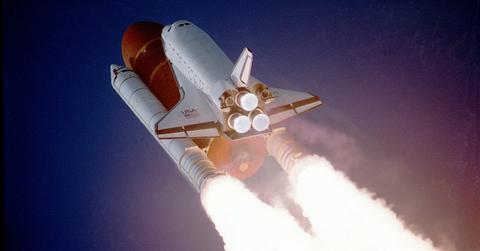NASA's Dream Chaser Aims To Lower Costs And Increase Reusability
NASA's successor to the Space Shuttle, the Dream Chaser, is bringing the space program back to launching rockets into Earth's low orbit. Its goal will be to complete numerous trips to the International Space Station.
Updated May 22 2019, 8:38 a.m. ET
NASA has fully unveiled the Dream Chaser, the space program’s new successor to the retired Space Shuttle. The new space plane will be delivering cargo to and from the International Space Station (ISS) that’s orbiting around the Earth. It has the ultimate goal fulfilling six missions between 2019 and 2024.
Dream Chaser is essentially a miniature edition of the traditional Space Shuttles that are aimed to be more reusable. It will be divided into two different horizontal landing vehicles: the Dream Chaser Cargo System and the Dream Chaser Space System. As you’d expect, the “Cargo System” will be holding supplies while up to seven astronauts will fit in the “Space System.”
These new space vehicles are expected to be reused up to 15 times, far more than the partially reusable Space Shuttle. What will help that process is the new horizontal landing process. Similar to aircraft, these planes will land on runways after being launched vertically. It’ll be guided by rudimentary wings that are tilted, making the spacecraft glide when landing. They’ll also be just one-quarter of the size of the old Space Shuttle model.
Reducing size and improving reusability are goals that NASA hopes to achieve to make this program more successful than the Space Shuttle. This is one of the many reasons Elon Musk started the SpaceX program. Back in March, the Falcon 9 rocket became the first reflight of an orbital-class rocket. Ultimately, Musk wants to develop rockets that “can fly multiple times per day and conduct tens of thousands of flights over its lifetime.”
The spacecraft has been tested at NASA’s Armstrong Flight Research Center at the Edwards Air Force Base in California since last January. Sierra Nevada Corporation’s space systems division has built the plane itself and is behind the testing with NASA. It’s recently coming off of multiple tow tests, where scientists were able to study the plane’s braking, steering, and automatic guidance.
It’s been gearing up for an approach and landing test later this year. The process consists of dropping the unmanned space plane from a helicopter and the autonomous landing system is supposed to guide the vehicle to a center line. An earlier prototype was tested in late 2013, but the landing gear malfunctioned.
The Space Shuttle was the world’s first reusable spacecraft and had 135 launches from 1981 before retiring in 2011. There were two fatal disasters in the history of the Space Shuttle; Challenger was the only launch that broke apart shortly after launch in 1986 and Columbia disintegrated entering the Earth’s atmosphere in 2003. All seven crew members died in both events.
Fatalities weren’t the ultimate reason why the Space Shuttle was discontinued as there were vast improvements made after each unfortunate case. Instead, it was due to hefty costs that kept NASA from keeping the program going. They’ll hope the process is cheaper with the new Dream Chaser in the upcoming years.
